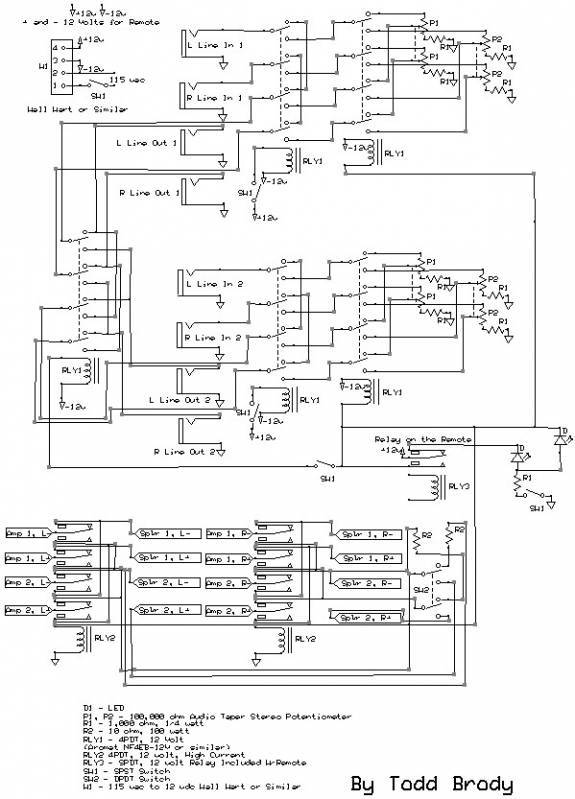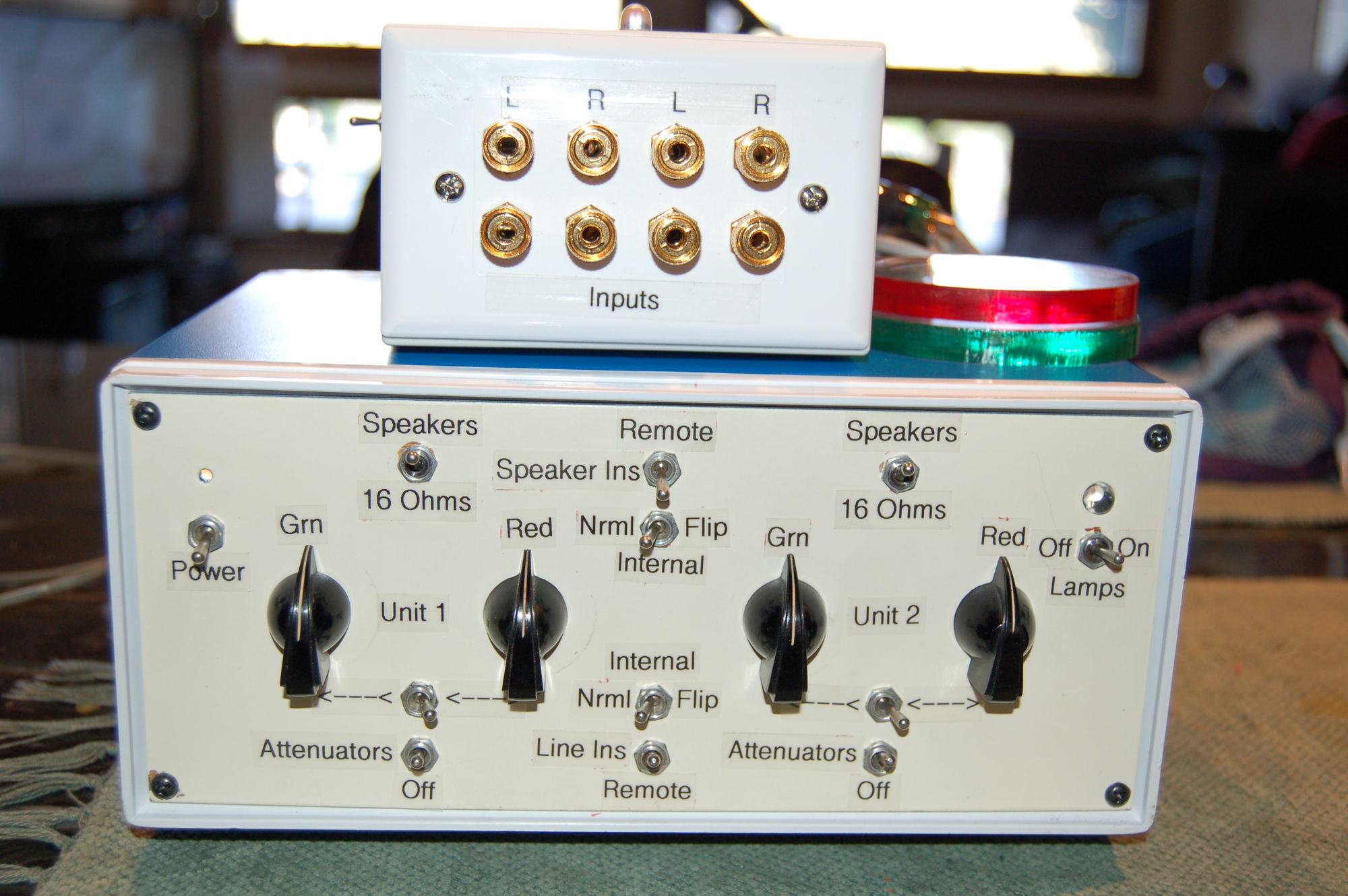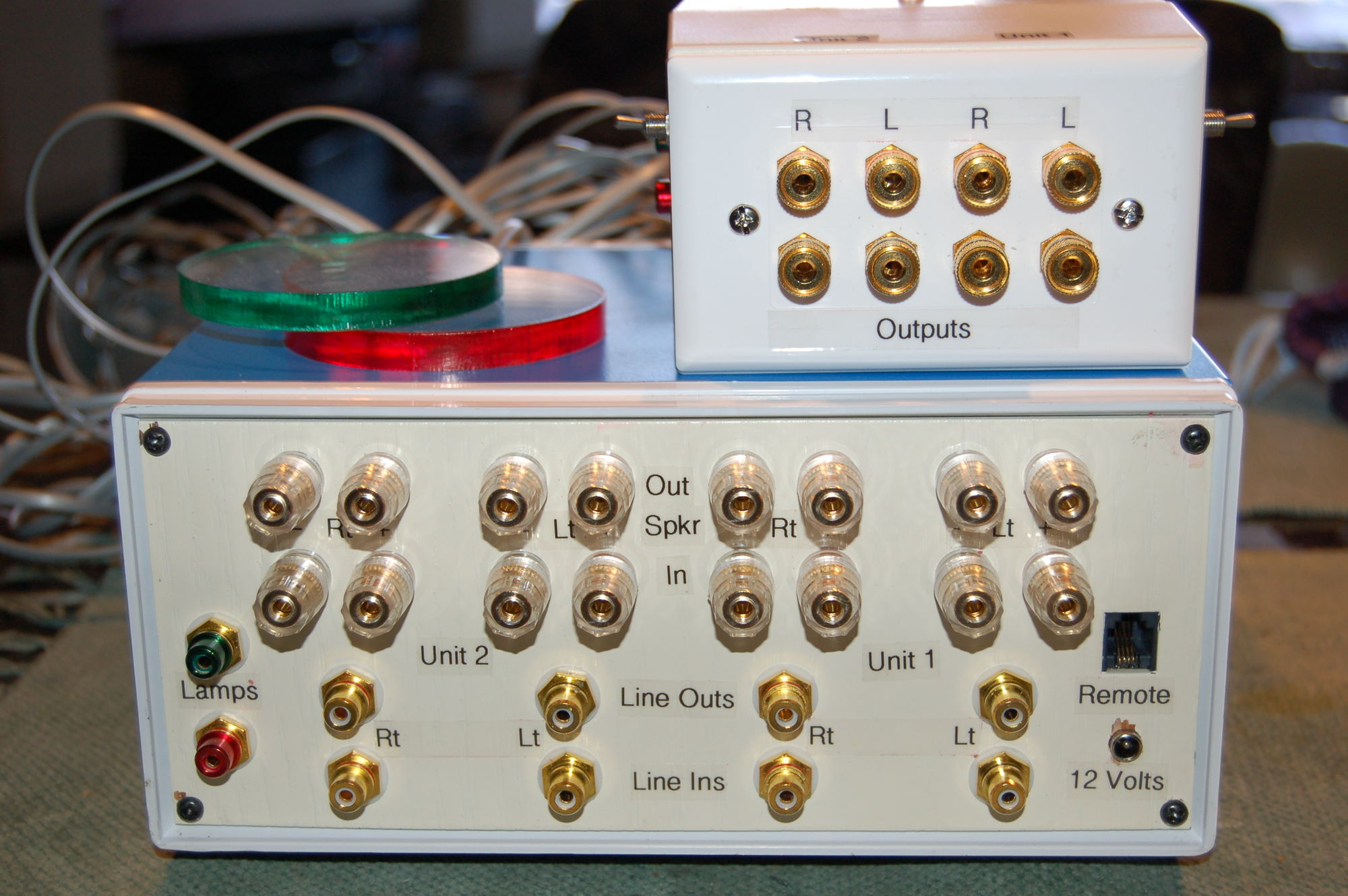Some tube amps will require "an extra layer of protection" in that the milliseconds that the relay is open during switching can do damage to them.
Not shown in my schematic, but added later, each speaker INPUT also has a switch that inserts a 261 ohm, 30 watt resistor that "stays with the amplifier" so that there is always a minimum of 261 ohms across the output, even when the relays are open.
The value was selected after discussion with on-line "tube people" to select a value high enough so as to have very little effect when playing though a set of speakers, but low enough to effectively "load" the amplifier. This would drop a 16 ohm load to about 15.1 ohms, or an 8 ohm load to about 7.8 ohms.
On another note! For those who "poo poo" A/B testing, consider this.
You can listen to each system as long as you desire. Maybe you don’t even want to hear the other system. So you are casually listening to one of your favorite tracks and you come across a passage and say to yourself, "That sounds a bit strident. I wonder if it is the cut, or a feature/flaw of the speaker." So you instantly switch to "B" and replay/continue the passage and listen again for a difference. And of course they need to be the same volume for a fair comparison.
YOU CAN’T DO THAT ANY OTHER WAY!
![]()




